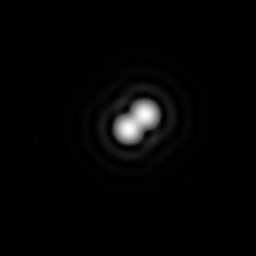by Dave Blane
Beta Muscae, the fainter of the two prominent stars in Muscae at the foot of the Southern Cross (Crux), is a well-known close double star. It is well positioned for observing in Autumn, being high in the southern sky in the early evening.
This is a binary star system with a period of about 194 years and an orbital eccentricity of 0.6. In 2013, the two stars had an angular separation of 1.0 arc-seconds at a position angle of 50° according to the Washington Double Star Catalog.
Discovered in 1880 by HC Russel when the separation was only 0.5 arc-seconds, it has the designation R207.
The components are main sequence stars of similar size and appearance. The primary component, β Muscae A, has an apparent magnitude of 3.51, a stellar classification of B2 V, and about 7.35 times the Sun’s mass. The secondary component, β Muscae B, has an apparent magnitude of 4.01, a stellar classification of B3 V,] and is about 6.40 times the mass of the Sun.
The Cambridge Double Star Atlas describes it as “a radiant but tight bluish pair for very steady nights”.
So if you would like to test your optics, visual acuity and the “seeing” conditions, see if you can split this close double.
The picture below is a simulation using “Aberrator” and depicts the view through a 127mm telescope and I found this be very similar to my view through my 127mm Maksutov at 300x.
Simulated view of Beta Muscae
Finder chart for Beta Muscae


